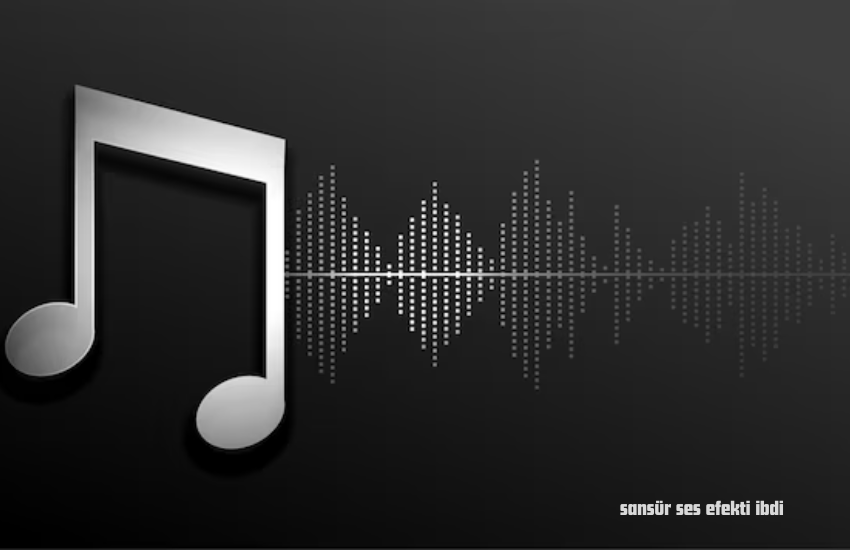The sansür ses efekti ibdi is a widely recognized auditory tool used to mask inappropriate or sensitive content across various media platforms. Primarily, it serves to bleep out offensive language or information that isn’t suitable for all audiences, maintaining the integrity of the content while adhering to regulatory standards.
History and Evolution
The origins of censorship sound effects date back to the early days of radio broadcasting, where the need to comply with moral and legal standards necessitated a means to obscure offensive material. Over time, this practice evolved, adapting to new media forms such as television and the internet, incorporating advancements in sound technology to enhance its effectiveness and subtlety.
Types of Censorship Sound Effects
- Beep Sound: The most common form of censorship sound, often associated with bleeping out explicit language.
- Mute Sound: A brief silence used to replace the censored part of the audio, less jarring than a beep.
- Other Common Types: Include buzzers, tones, and other creative sounds that signal the censoring of content.
Applications in Media
- Television: Utilized during live broadcasts and pre-recorded shows to adhere to broadcasting standards.
- Radio: Essential for live radio shows to prevent unintended dissemination of offensive content.
- Internet Platforms: Used in podcasts, videos, and social media to manage user-generated content and comply with platform policies.

Legal and Ethical Considerations
Censorship sound effects operate within a framework of regulatory guidelines that vary by region. Ethical debates often arise regarding the balance between censorship and freedom of expression, necessitating a nuanced approach to the implementation of these effects.
Technical Aspects of Creating Sound Effects
Creating effective censorship sound effects requires a combination of software tools and sound engineering techniques. Popular software such as Adobe Audition and Audacity provide robust platforms for designing and implementing these effects, ensuring they blend seamlessly with the original audio.
Impact on Content and Audience
The use of censorship sound effects significantly influences both the content and its reception. For creators, it presents a means to retain broader audience appeal and adhere to guidelines. For audiences, it maintains a level of decorum, though it can sometimes disrupt the flow and authenticity of the content.
Censorship Sound Effects in Different Cultures
Cultural norms significantly influence the perception and application of censorship sound effects. Western media often employs overt beeping sounds, while Eastern media might favor subtler methods, reflecting broader societal attitudes towards censorship.
Alternatives to Censorship Sound Effects
While audio censorship is prevalent, visual censorship, such as blurring or pixelation, and content editing, which involves cutting out objectionable material, are also common. Each method has its advantages and limitations, depending on the medium and context.
Future of Censorship Sound Effects
Advances in technology, such as artificial intelligence and real-time audio processing, are set to revolutionize the implementation of censorship sound effects. Future trends may see more sophisticated and less intrusive methods of content moderation.
Case Studies
Examining famous examples, such as live TV broadcasts with unexpected profanity, provides insights into the practical application and effectiveness of censorship sound effects. These case studies highlight both successes and areas for improvement.
How to Use Censorship Sound Effects
A step-by-step guide to using censorship sound effects can help content creators navigate the technical and creative aspects. Best practices include choosing the right type of sound, timing the effect appropriately, and ensuring it does not detract from the overall content quality.

Tools and Resources
Numerous tools and resources are available for those looking to implement censorship sound effects. Software recommendations, tutorials, and online communities offer support and guidance for both novices and professionals.
Common Challenges and Solutions
Technical issues, such as syncing the sound effect with the audio, and creative challenges, like maintaining content flow, are common. Solutions involve using advanced software features, seeking professional advice, and continuously refining the technique.
FAQs
- What is the purpose of a censorship sound effect?
- The primary purpose is to obscure inappropriate or sensitive content, making it suitable for a broader audience.
- How are censorship sound effects created?
- They are typically created using sound editing software, which allows precise insertion and adjustment of the effect.
- Are censorship sound effects used globally?
- Yes, though the type and implementation can vary significantly based on cultural norms and regulatory requirements.
- Can censorship sound effects be automated?
- With advancements in AI, it is increasingly possible to automate the detection and censoring of content in real-time.
- What are some common alternatives to audio censorship?
- Visual censorship and content editing are common alternatives, each suited to different media and contexts.
- How do censorship sound effects impact viewer experience?
- While they can be slightly disruptive, they help maintain content appropriateness and can prevent larger issues with compliance.
Conclusion
The censorship sound effect is an essential tool in modern media, balancing the need for content moderation with the goal of maintaining audience engagement. As technology evolves, so too will the methods and sophistication of these sound effects, ensuring they continue to serve their purpose effectively.


